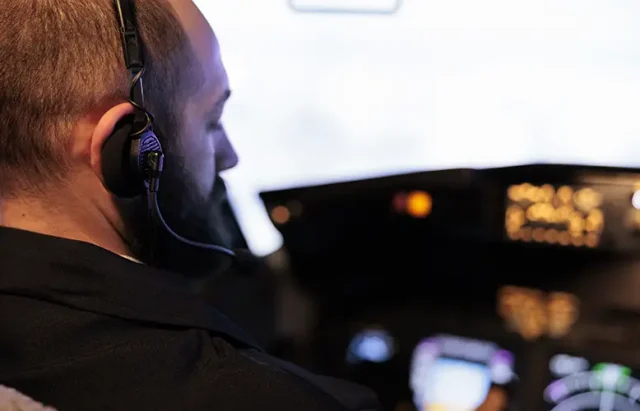
Light simulators have become an indispensable tool for aviation training and an engaging way for enthusiasts to explore the skies. As reported by the International Civil Aviation Organization (ICAO), modern simulators are an important part of pilot training, replicating real-world scenarios with remarkable accuracy.
The technology has evolved to the point where some flight simulators are approved by regulatory bodies for professional training, blurring the line between simulation and real-world aviation.
The Evolution of Flight Simulators
The earliest flight simulators were developed for military and commercial pilot training, offering basic instrumentation and limited graphics. The latest software integrates real-world weather data, topographical mapping, and physics-based aerodynamics to provide users with an experience that closely mirrors actual flight conditions.
Microsoft Flight Simulator is a leading example, incorporating satellite imagery and artificial intelligence to render photorealistic landscapes. According to an industry analysis by Eurocontrol, this level of realism helps pilots refine their navigation skills while giving aviation enthusiasts an opportunity to explore the world from above.
Key Features of Modern Flight Simulators
Virtual reality (VR) has significantly enhanced flight simulation, allowing users to experience a full 360-degree cockpit view. As reported by the Federal Aviation Administration (FAA), VR-based simulators are now used for initial pilot training, offering an affordable alternative to traditional flight hours. In professional settings, full-motion simulators integrate VR with hydraulics to create a near-authentic flying experience.
Another major advancement is multiplayer connectivity. Pilots can engage with others in shared airspaces, participating in live air traffic control environments. Platforms like VATSIM provide real-time ATC interactions, making flight simulations more dynamic and realistic.
Popular Flight Simulators to Try
For those interested in exploring the world through flight simulators, several options stand out. Microsoft Flight Simulator remains a leading choice, known for its impressive visuals and extensive aircraft selection. X-Plane is another well-regarded option, favored for its realistic flight dynamics and wide-ranging customization features. For those interested in military aviation, Digital Combat Simulator (DCS) World offers a variety of fighter jets and combat scenarios.
Other Aviation Themed Games on the Market
Flight simulation isn’t the only way aviation enthusiasts can enjoy flight themed experiences. Many aviation-inspired games go beyond traditional simulators, including tycoon-style management games where players run their own airline. Additionally, aviation-themed casino games, such as slots and crash-style betting games like Aviator, have gained popularity. These can be found at new sweepstakes casinos, which offer a unique gaming experience and exciting prize opportunities. Access full details on strafe.com for a comprehensive guide on the latest platforms where you can take advantage of sweepstakes bonuses.
Choosing the Right Flight Simulator for Your Needs
Selecting a flight simulator depends on individual goals, whether for training, entertainment, or technical exploration. Those seeking a highly realistic experience should consider simulators that prioritize accurate aerodynamics, real-world weather integration, and advanced navigation systems. For users focused on professional training, options with regulatory approval and structured learning modules provide the necessary tools for skill development.
Graphics quality and environmental detail are also key factors, as some simulators emphasize visual realism, while others focus more on flight mechanics. Multiplayer capabilities and compatibility with additional hardware, such as yokes, rudder pedals, and VR headsets, can further enhance immersion.
Real-World Applications
Flight simulators serve a purpose beyond entertainment. They are widely used for pilot training. Many airlines and flight schools incorporate these simulators into their programs, allowing pilots to practice maneuvers and emergency procedures in a controlled setting. This practical application highlights the simulators’ role in real-world aviation.
Military applications also benefit from flight simulators, as they enable pilots to train for combat scenarios without the risks associated with live exercises. These simulators provide realistic environments and challenges, helping pilots build the necessary skills to manage complex situations. As stated by a Lockheed Martin spokesperson, advanced simulators allow pilots to practice tactical maneuvers and mission strategies in a controlled setting without risk.
The Future of Flight Simulation
The future of flight simulators looks promising, with continuous technological advancements driving further realism. Artificial intelligence (AI) is expected to enhance simulations, introducing smarter, more responsive virtual co-pilots and air traffic control systems. Enhanced VR and augmented reality (AR) features are also in development, further narrowing the gap between simulation and real-world flying.
As these technologies progress, they will likely expand the reach and appeal of flight simulators, attracting an even broader audience. From experienced pilots to newcomers, the appeal of virtual flight remains strong.





